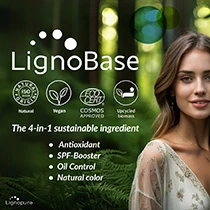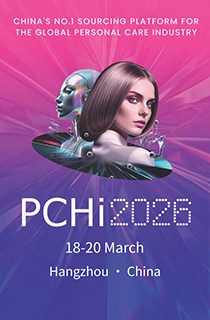Estée Lauder experts discuss science-based skin care innovation and academic collaboration

The Estée Lauder Companies (ELC) is researching biodegradable materials for cosmetics and exploring solutions that combat the sun’s effect on the skin in collaboration with the Massachusetts Institute of Technology (MIT), US.
Personal Care Insights speaks to Jennifer Palmer, SVP Global Innovation Development & Science Leadership at Estée Lauder, about what skin care solutions will come from the research.
The beauty company is funding the testing of Dr. Ana Jaklenec’s recently developed class of biodegradable materials that break down into sugars and amino acids. Jaklenec is the principal investigator at MIT’s Koch Institute for Integrative Cancer Research.
According to her research, these sugar and amino acid particles could replace plastic beads used in beauty products. They also encapsulate nutrients such as vitamin A, allowing them to be used in various cosmetic applications.
The lab will explore solutions to combat visible sunlight and blue light’s effects on the skin. The research will focus on developing dispersible, stable, and formulation-compatible materials that effectively block visible light and protect consumers from visible light-induced pigmentation and potential photodamage.
Additionally, Estée Lauder recently sponsored Century Summit V, hosted at Stanford University, US, with the Stanford Center on Longevity. We also spoke to Carl Haney, Estée Lauder’s EVP, Research, Product & Innovation Officer, about why the company is focusing on US university research.
Why did you collaborate with MIT and what innovations are you targeting from the research?
Haney: Fostering strategic partnerships with world-leading scientific and academic institutions has long been a critical approach to driving innovation at Estée Lauder. We have research projects and collaborations underway with a variety of academic institutions around the world. For this particular collaboration, we chose to partner with MIT given the Langer and Jaklenec Labs’ leadership in bioengineering and, in particular, the invention of materials.
 Estée Lauder will use university research in future skin care offerings.As consumer demand for sustainability grows and regulations around the world evolve, we decided to proactively partner with MIT to identify and create alternative biodegradable materials and explore solutions that combat the effects visible sunlight and blue light have on the skin.
Estée Lauder will use university research in future skin care offerings.As consumer demand for sustainability grows and regulations around the world evolve, we decided to proactively partner with MIT to identify and create alternative biodegradable materials and explore solutions that combat the effects visible sunlight and blue light have on the skin.
Looking ahead, we hope this research will lead to the development of new high-quality ingredients designed with sustainability in mind that can be used in new formulations and offer new meaningful benefits to consumers.
When do you expect the research with MIT to turn into shoppable products?
Haney: We view our partnership with MIT as a long-term one, and we’re closely collaborating with the Langer and Jaklenec Labs to determine the best use cases for the biodegradable materials, including testing and scale-up for commercialization, which would likely span a few years.
What was Estée Lauder’s role at the Century Summit V?
Palmer: The Stanford Center on Longevity is leading the conversation on longevity with its New Map of Life initiative. Through our collaboration, we can touch on the different lifestyle elements that feed into the larger longevity conversation. It was important for us to be part of the Century Summit, where the top leaders in business, media, policy, and research come together to discuss the implications of the 100-year life, allowing us to further our thought leadership in longevity and tap into different aspects of the broader longevity conversation.
We participated in a panel discussion to discuss how the beauty industry is responding to the new longevity trend and how the narrative around aging and aesthetics is changing.
How is the narrative around aging changing, and how does “longevity” relate to the personal care industry?
Palmer: The conversation is between biological age and chronological age. We know there are preventative and healthy lifestyle measures people can take to positively impact and reverse their biological age. Now, skin longevity research has enabled us to not only make the skin look younger but also help it act younger for longer. It’s about pro-aging — living well and supporting your skin’s peak performance at any age.
Longevity is a multi-generational conversation. We know that interest in biohacking and age-reversal practices is at an all-time high, even among GenZ. That’s why longevity presents such a compelling opportunity for the beauty industry.
Research results
Last week, several Estée Lauder brands presented research and clinical results at the Chinese Dermatologist Association (CDA) and the Japanese Society for Investigative Dermatology (JSID) meetings.  ELC brands revealed research at conferences in Asia.
ELC brands revealed research at conferences in Asia.
The CDA focuses on dermatological health care, and its 19th annual meeting took place in Wuhan, China.
Scientists from Clinique Laboratories shared findings on managing hyperpigmentation and uneven skin tone using a multi-pronged approach, including UP-302, a tyrosinase inhibitor. Tyrosinase inhibitors block the enzyme needed to produce the two kinds of melanin skin pigments.
The brand also introduced its latest Medical Device II franchise for post-procedure skin at the CDA meeting.
Meanwhile, La Mer recently convened a symposium to unveil insights into its Miracle Broth and showcase its benefits with clinical research. Specialists from La Mer’s Max Huber Research Labs identified and explored how specific molecules can help regulate skin homeostasis and enhance healthy hydration.
The studies confirmed anti-irritation properties and enhanced skin barrier function with a treatment infused with Concentrated Miracle Broth. This ingredient is said to be particularly effective after post-dermal procedures and provides soothing benefits for sensitive skin.
At the 49th Annual Meeting of the JSID, Estée Lauder scientists discussed the importance of skin cell synchronization with the natural circadian rhythm for optimizing the efficiency of repair, recovery, and protection in different skin cell types.
They also presented Estée Lauder’s internal research demonstrating how precise timing of skin cell functions and synchronization is critical to keeping skin looking healthy and youthful.













